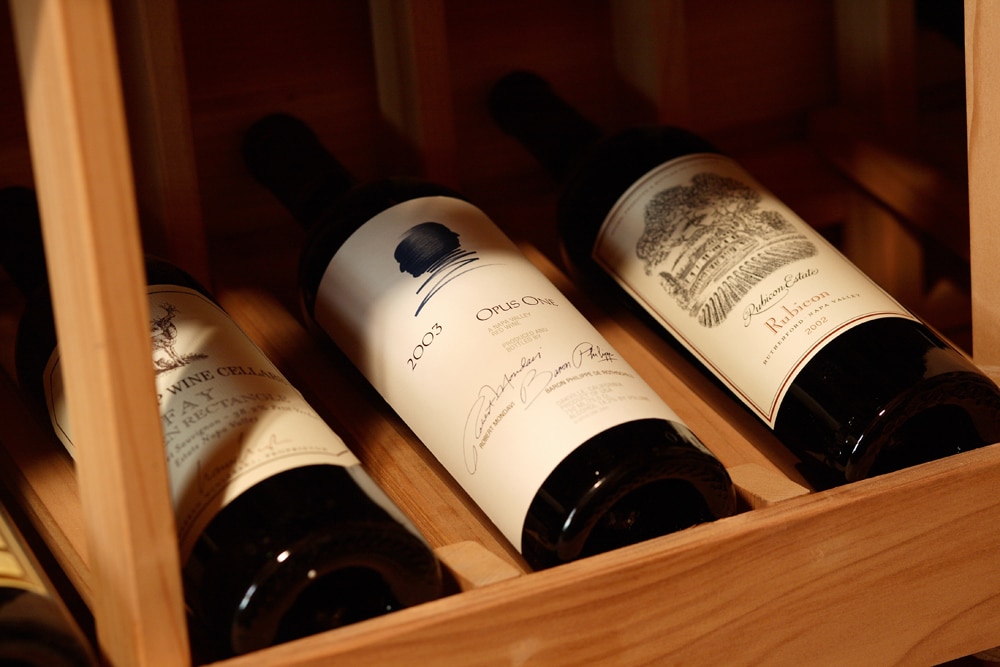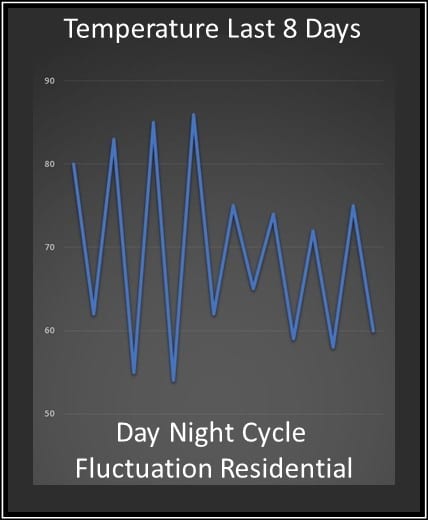
The secret to aging wine, to protecting your wine collection, is in keeping it in just the right environment.
The Wine Cellar Designers Group, based in Los Angeles, California, represents master wine cellar builders all over the U.S.
We endeavor to provide best practices for the design and construction of both residential and commercial custom wine cellar rooms. Essentially this means creating wine cellars that are built to last, as well as run efficiently. All intended to provide the best possible environment for storing your wine collection.
Wine Cellar Refrigeration Systems – The Heart of Your Wine Cellar
There are four primary design elements to consider when designing the optimum wine cellar cooling system for your wine cellar.
- The wine cellar refrigeration system, is it a must to have one?
- What are the different types of wine cellar refrigeration systems?
- What are the various merits of the different brands of refrigeration units?
- What about the related elements of a refrigeration system?
Related Questions
Sometimes people refer to wine cellar cooling systems rather than refrigeration systems. Is there a difference?
The Wine Cellar Refrigeration System, Is It A Must Have?
Refrigeration systems seem to add a lot of cost to a wine cellar. The basement in my home is pretty cool can I save dollars by not installing a refrigeration system?

Most homes and commercial properties temperatures fluctuate every day. The most important aspect of an aging environment for wine is in keeping it at a constant stable temperature. This is usually within 2-3 degrees of 57 Fahrenheit.
Optimally storing and aging wine over long periods is the primary purpose of most wine cellars. Therefore, wine cellar refrigeration system units are built and installed into a wine cellar. If you intend to store relatively inexpensive wine for short periods of time such as a week or two a system for maintaining just the right temperature may be overkill for you.
However, if you are like most wine collectors, a significant proportion of your wine will be unique wine from many locations around the world. French, Argentinian, German, Australian not to mention California are just a few of the more popular sources of vintage wines. A lot of these wines will gain value and prestige over time, sometimes over the course of many years.
The secret to aging wine, to protecting your wine collection, is in keeping it in just the right environment. The most important aspect of this is keeping it at just the right temperature.
Over these longer periods of time, months or probably years, wine can be damaged or even completely ruined by being stored in an environment that is too hot, too cold or worse, one that regularly fluctuates.
Most residential homes, as well as commercial establishments, fluctuate significantly more in temperature than most people notice. Even basement-based wine cellars fluctuate in this way. Just because day-night fluctuations in a basement environment tend to be cool a lot of the time, does not make it ideal for aging wine. It just means that it may be a little more efficient to build a wine cellar there. This is true for any part of the U.S., not just Los Angeles.
Day and night time in the average home will often vary by as much as 10 or even 20 degrees Fahrenheit. Commercial buildings often have even more dramatic variations in temperature. Add to that seasonal variations due to air conditioning in the summer, and heating in the winter, plus temperatures can also vary greatly depending upon on the time of the year.
All this adds up to an environment actively hostile to the long-term storage and aging of quality wines.
Other Factors
Humidity can also be a damaging variable in a wine cellar. Continual changes in humidity as the temperature changes can mess with wine corks if they are subjected to these variations over an extended period.
For this reason, a wine cellar climate control system should be considered the heart of a serious wine collector’s cellar. A refrigeration system becomes a climate control system when it manages the humidity as well as the temperature. In addition to impacting the wine corks humidity can cause mold related problems. In an incorrectly designed wine cellar these problems are both common and insidious.
Historically, wine stored in underground caves did much better than in other locations. It was therefore discovered that wine aged reliably when it was stored in the very stable environment typically found underground.
 In general, the temperature found deep underground stays at a constant 50 – 55 degrees, regardless of location and the temperature at or near the surface. When we design a wine cellar storage room we are deliberately and artificially recreating a cave like environment. Other factors to consider are to make sure there is no UV rays directly or even indirectly from the sun. Also that there is no vibration from outside sources. This is an age-old and time-tested wine storage practice for successfully aging wines.
In general, the temperature found deep underground stays at a constant 50 – 55 degrees, regardless of location and the temperature at or near the surface. When we design a wine cellar storage room we are deliberately and artificially recreating a cave like environment. Other factors to consider are to make sure there is no UV rays directly or even indirectly from the sun. Also that there is no vibration from outside sources. This is an age-old and time-tested wine storage practice for successfully aging wines.
An effective wine cellar cooling system will reliably control the climate stabilizing the wine cellar’s humidity and temperature with the least manual interference or power use.
Optimal Temperature & Humidity for Wine Storage
The standard for most favorable wine storage and aging agreed by wine professionals is 57 degrees Fahrenheit with a humidity level of 55% and does not vary more than plus or minus 5%.
Your wine cellar refrigeration unit – climate control system, really is an integrated system of all the parts of the wine cellar that affect temperate and humidity. Any one of these factors designed incorrectly can lead to; excessive running costs, mold, irritation noise or failure of the mechanical systems in the wine cellar refrigeration units themselves.
We have repeatedly encountered all these problems over the last twenty years or so. The truly sad part is they could have all been avoided. Poorly built wine cellars are common when built by the cost cutter and or the generalist. Worst of all it can lead to an irreplaceable collection of wine, collected over years, to be a letdown even completely ruined.
The mechanical component of a wine cellar climate control system is the refrigeration and humidity control unit. However, the complete system is a combination of that as well as several additional factors. This includes the vapor barrier in the surrounding walls and ceiling along with the insulation. An often-overlooked part of the whole system is the wine cellar door itself. If the door does not entirely seal the room, it can be a cause of excessive running of the refrigeration unit as well as fluctuations in temperature. Lighting can also be a factor, if the wine cellar’s lighting is of the incorrect type, it can generate a lot of heat, especially if accidentally left on.
More coming soon

